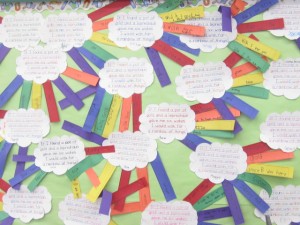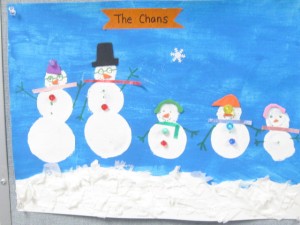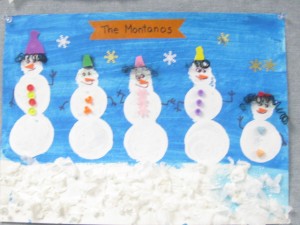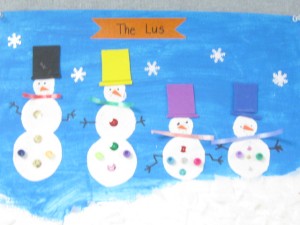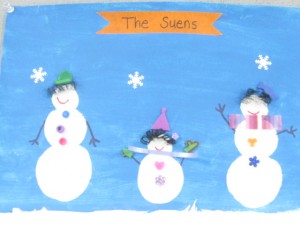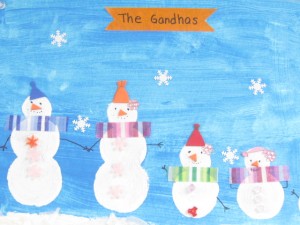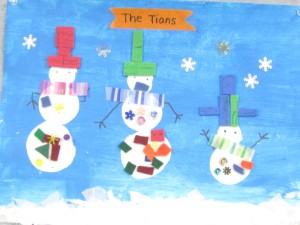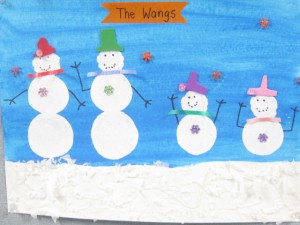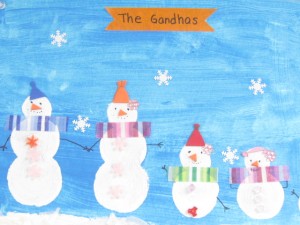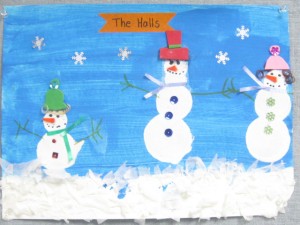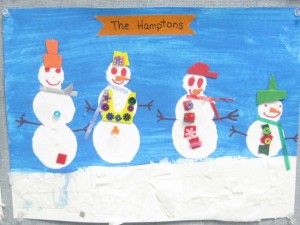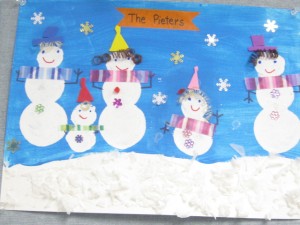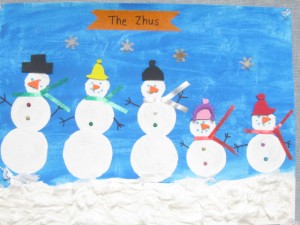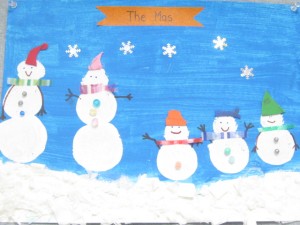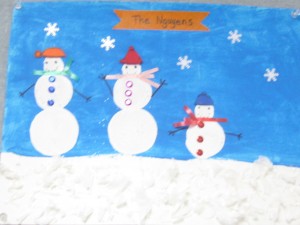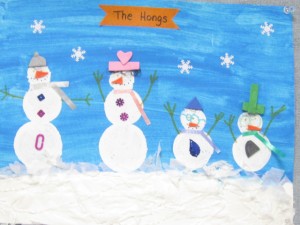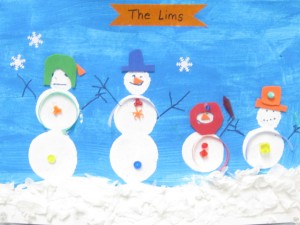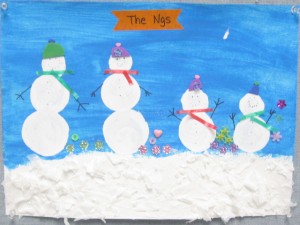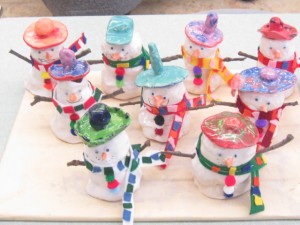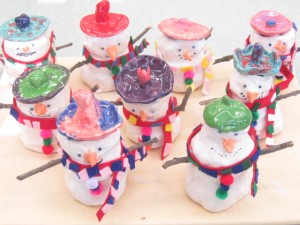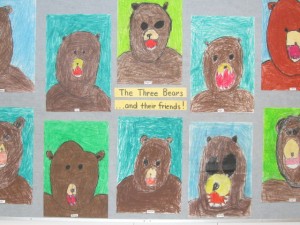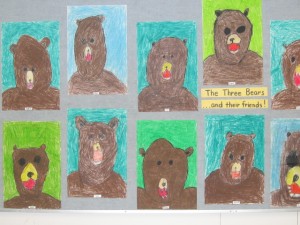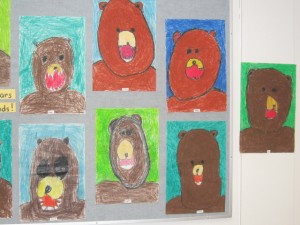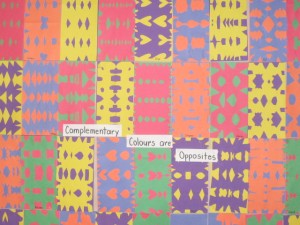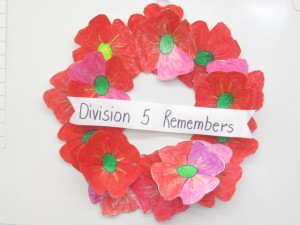In our Art classes we have been studying the element of Art – ‘value’. Students have learned where the colour that we see is (in the light) and that white and black are NOT colours. White is the lightest light and black is the darkest dark. Without light there is no colour.
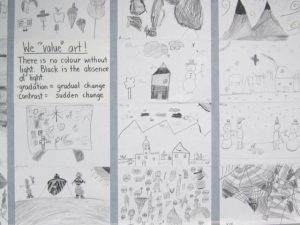
Students worked with white paper and only a black wax crayon to create a picture. They used ‘contrast’ – a sudden change from dark to light – and ‘gradation’ – a gradual change using the difference in pressure of crayon on paper. The lighter the touch the lighter the result, and vice versa with darkness.
Value is not only with blacks, whites, and greys.
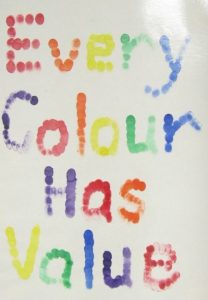
Last week students learned that when black is added to a colour (red, orange, yellow, green, blue, violet) that the result is not a change in colour but that it becomes a darker ‘shade’ of the original colour. For example, when black paint is added to red it creates a darker, deeper ‘shade’ of red – it doesn’t become black. Students were reminded that ‘shade’ comes from ‘shadow’, which they know is when there is less light. In contrast to this, when white paint is added to a colour the result is called a ‘tint’ – a lightening of the same colour. For example, when adding white paint to red paint we get lighter versions of red which we call ‘pink’.
Students used coloured construction paper, black wax crayons, and white chalk to create these pictures. Many seemed to think that ‘snow’ was necessary – even in April with our ‘heat-wave’ 🙂
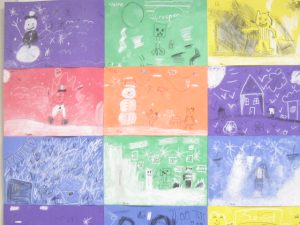
These sets of pictures are on the two bulletin boards outside of our classroom before the Office. Come by and check them out!
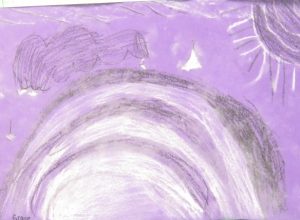
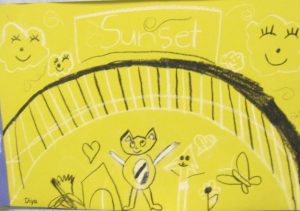
I think they look awesome!






